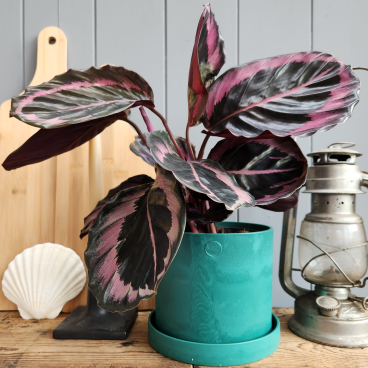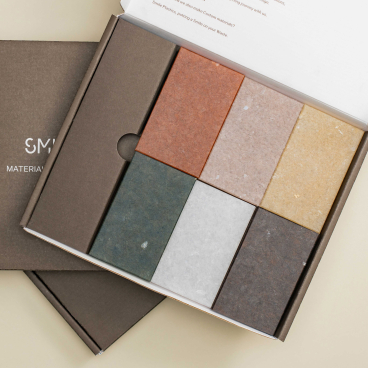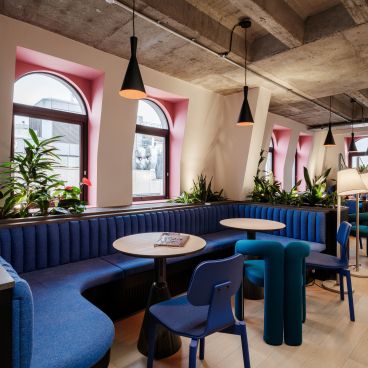The material installation, SMULD probes at the architectural possibilities of wood.
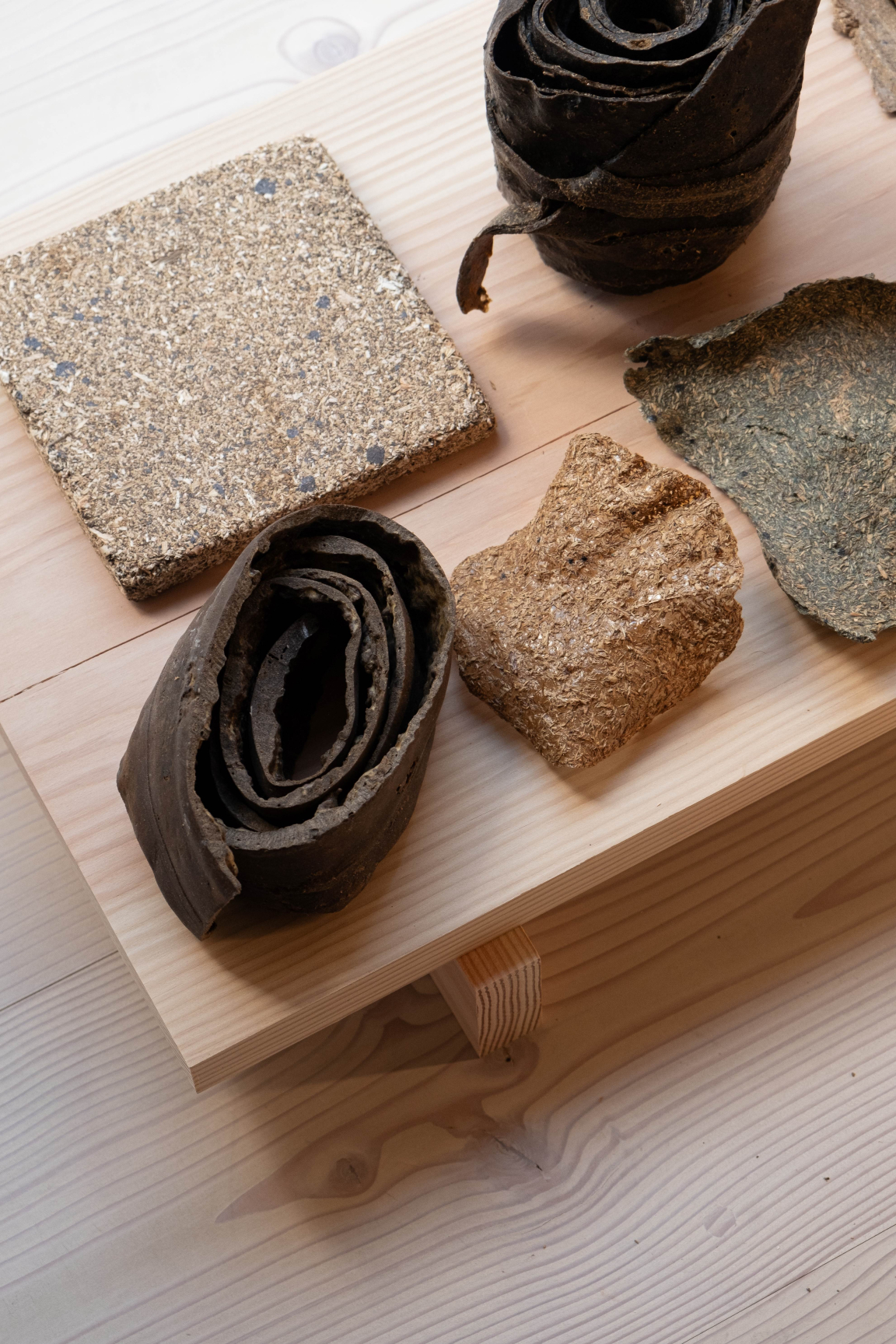
Natural Material Studio, Office Kim Lenschow, Nikolaj Bonde
A collaboration between Office Kim Lenschow and Natural Material Studio, SMULD is an architectural installation that explores new materials based on natural wood binders and sawdust from the Dinesen sawmill in Jels.
Newly opened at the Dinesen showroom gallery in Copenhagen, SMULD invites visitors into an immersive spatial setting that focuses on four new, bio-based building materials derived from sawdust. The space functions as a portal, leading visitors through the four different material studies, unpacking the aesthetics and structure found in sawdust via a sensory experience.
The Danish title ‘SMULD’ translates to all the small wood shavings and leftovers from wood working. The installation is based on nearly two years of material research into the utilisation of different types of sawdust from Dinesen - from fine dust to wood chips - the research has been investigating several material directions before zooming in on the four most promising.
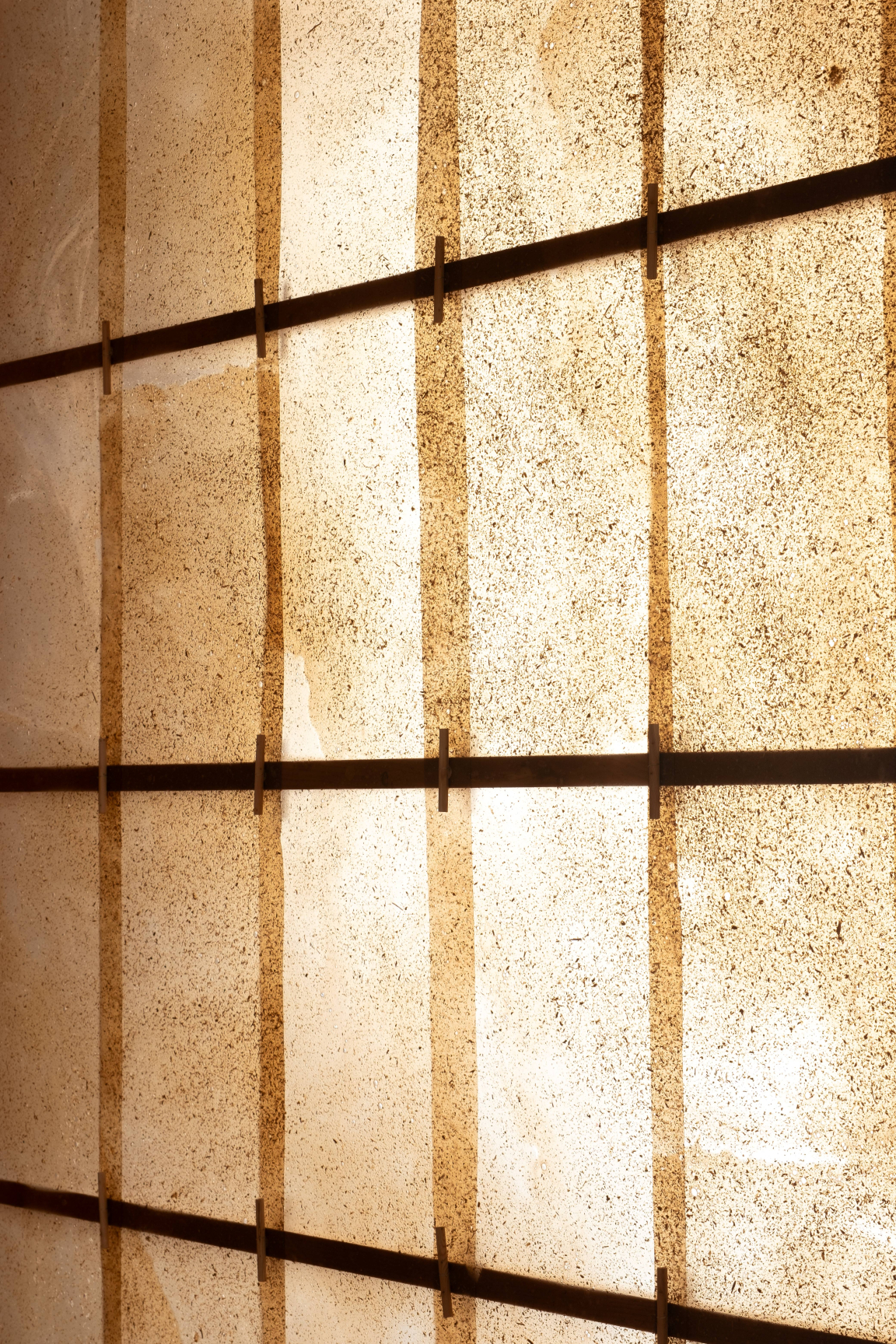
Natural Material Studio, Office Kim Lenschow, Nikolaj Bonde
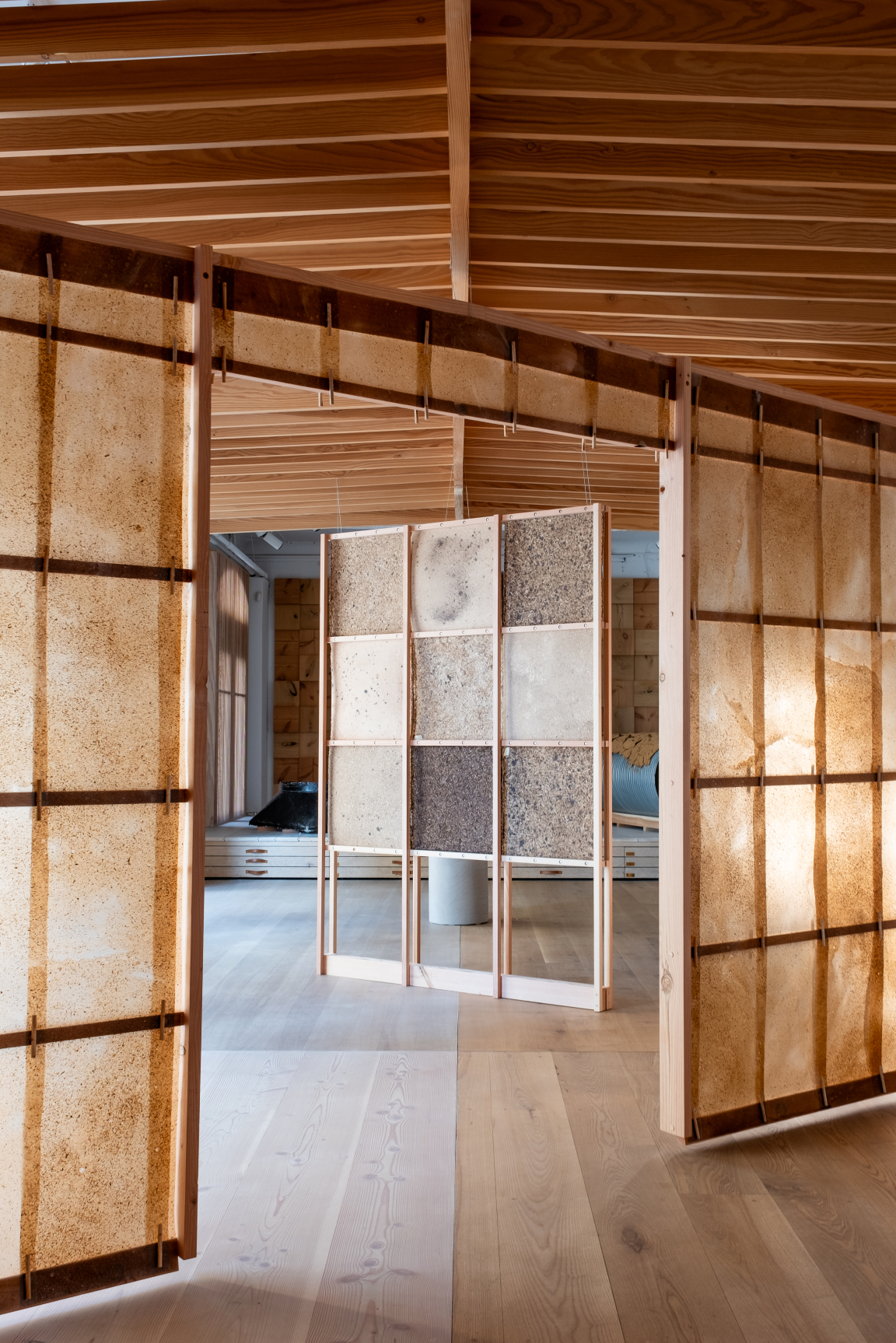
Natural Material Studio, Office Kim Lenschow, Nikolaj Bonde
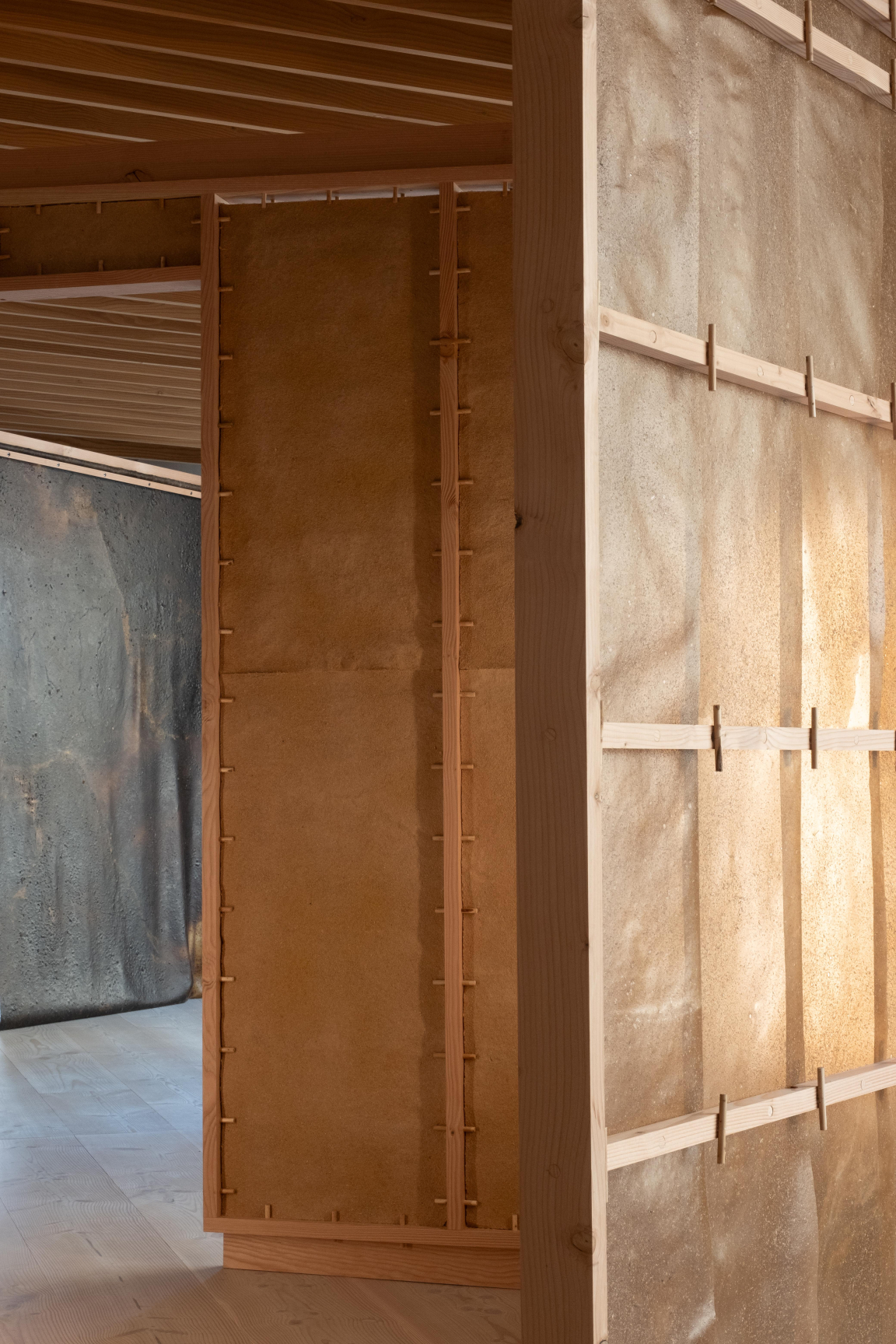
Natural Material Studio, Office Kim Lenschow, Nikolaj Bonde
Taking both an aesthetic and technological approach to the material, the exhibition explores new possibilities of sawdust within architecture - exhibiting its flexible, insulating, translucent and structural qualities.
“The wood and timber industry is predicted to play an important role as we transition the way we build to meet planetary boundaries. If we are to believe that wood can be a path towards a more sustainable solution, we must be careful to utilise the entire tree trunk, from planks and offcuts to shavings, sawdust, and dust.
"We must also ensure that the materials we develop and use are circular. One way to work with this is by ensuring that the material binder can dissolve without the use of chemicals. We have ensured this by only using the inherent binders of wood itself”, comments Bonnie Hvillum of Natural Material Studio and Kim Lenschow of Office Kim Lenschow.
The first portal consists of finely sifted wood plaster and planer shavings cast in a mixture of natural latex. The material opens up possibilities of working with wood as a flexible textile - expanding common areas of use.
The second portal is a sawdust plaster, consisting of fine sawdust and cellulose plastered onto wood fibre insulation. The material explores the possibility of optimising wall layering.
The third portal exhibits finely sifted wood plaster and planer shavings, cast as a liquid mass into paper-thin sheets. The material’s semi-translucent surface allows light to flow through - drawing reference to traditional Japanese shoji.
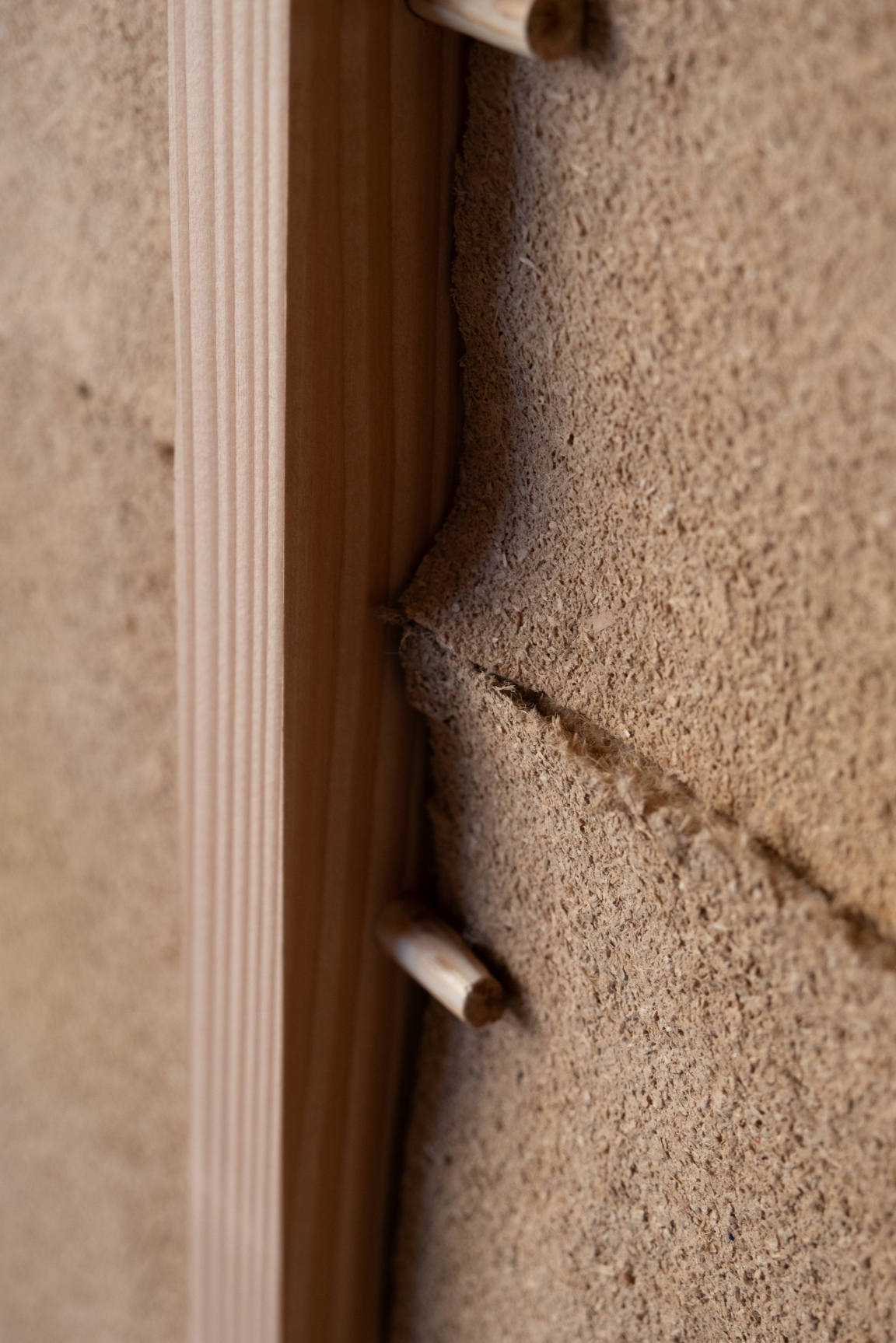
Natural Material Studio, Office Kim Lenschow, Nikolaj Bonde
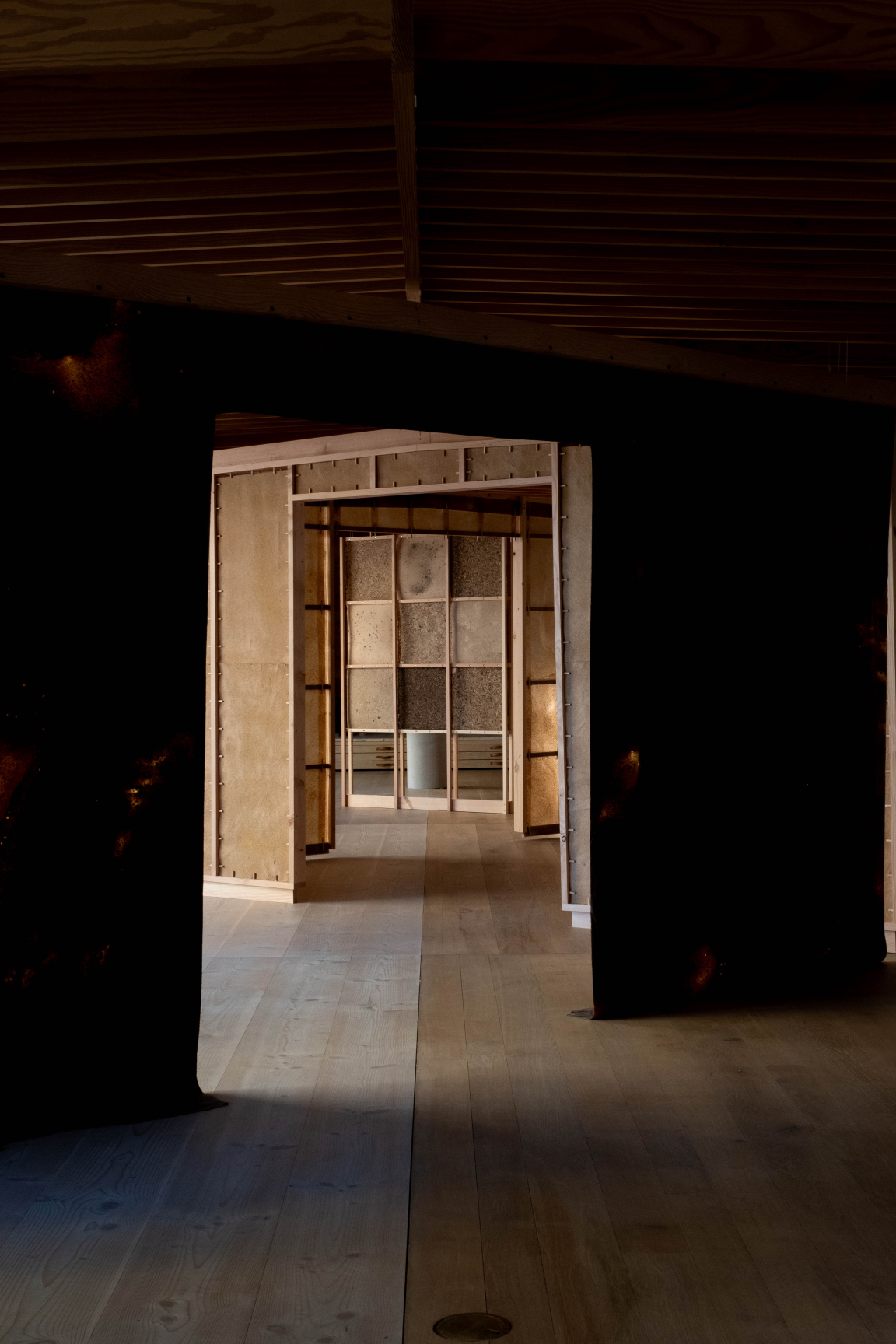
Natural Material Studio, Office Kim Lenschow, Nikolaj Bonde
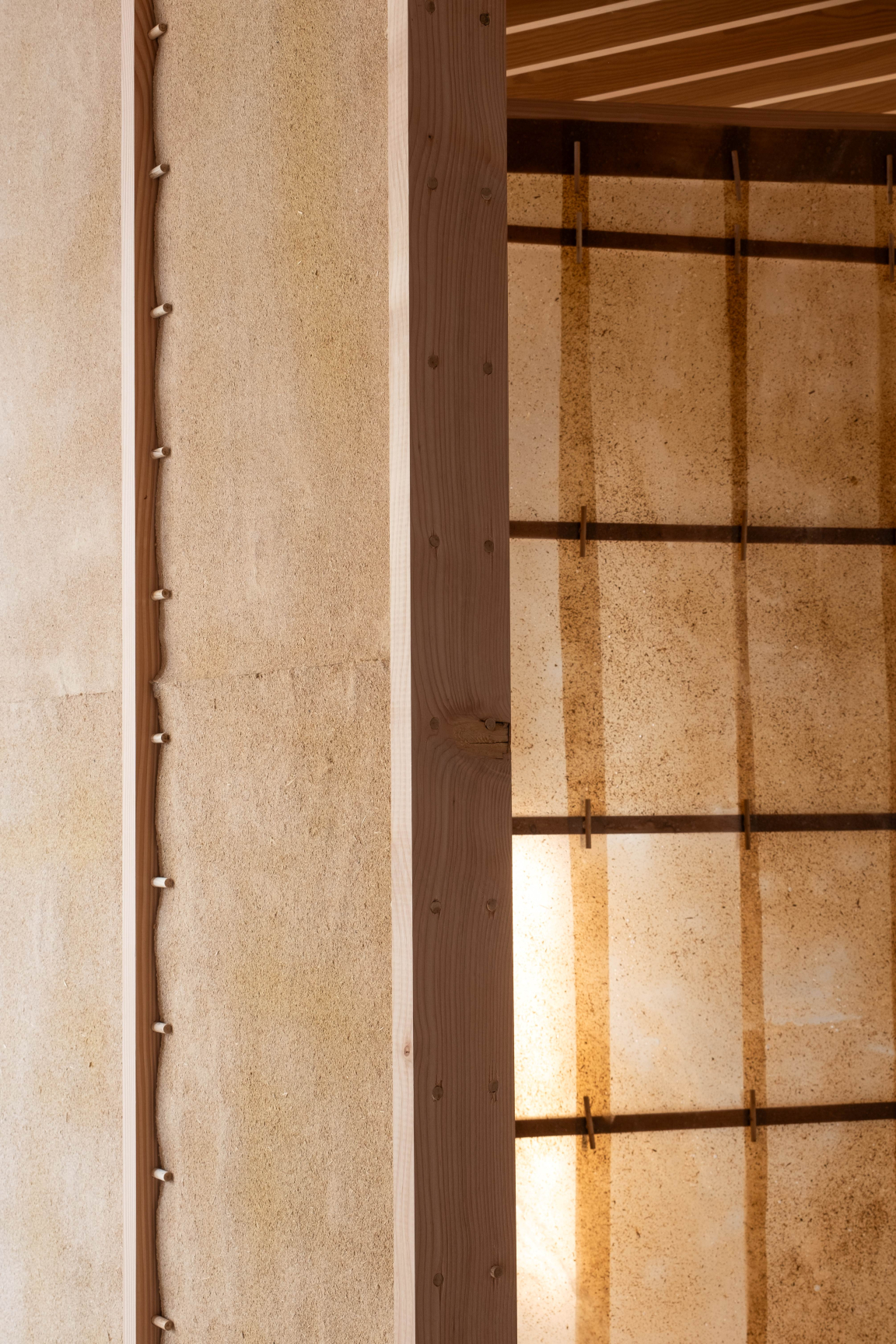
Natural Material Studio, Office Kim Lenschow, Nikolaj Bonde
Demonstrating the material's structural qualities, within the fourth portal, the panels are cast with a lignin binder in collaboration with the Danish Technological Institute. The material is the first attempt at a structural wood fibre panel with a natural binder, aiming for an aesthetically compelling surface, directly applicable in contemporary architecture.
Through the shared aim of expanding our perception of wood, the architectural practice Office Kim Lenschow and the creative studio Natural Material Studio - both based in Copenhagen - continue to learn from one another's approaches to material investigation. Kim Lenschow of Office Kim Lenschow comments, this collaboration "opens up completely new possibilities and expands the role of the architect from not only holding the desk work but also being the one carrying out research, innovation and material research.
"Learning and collaborating blurs the lines and reinforces a much stronger material understanding when building the future.”



